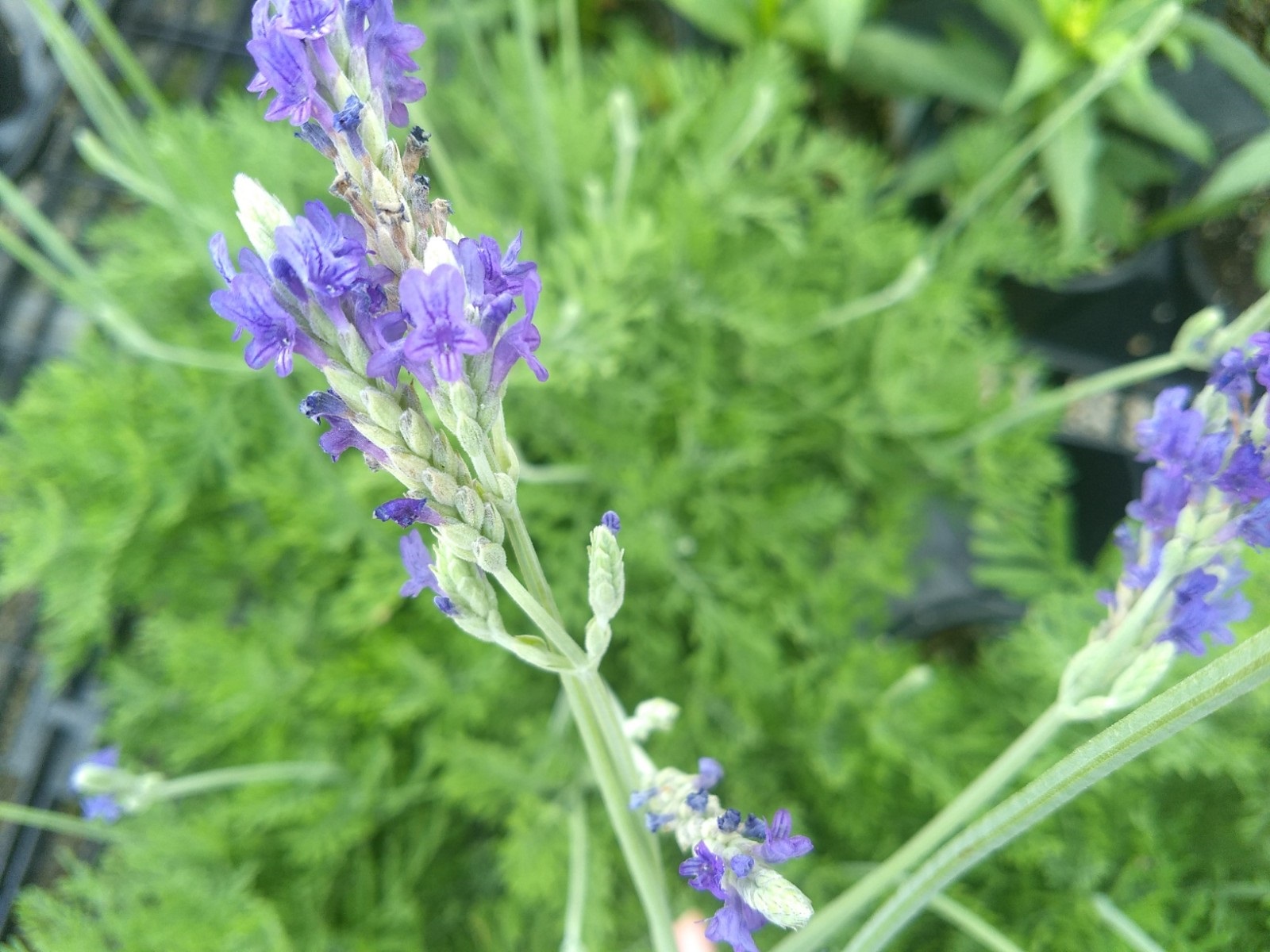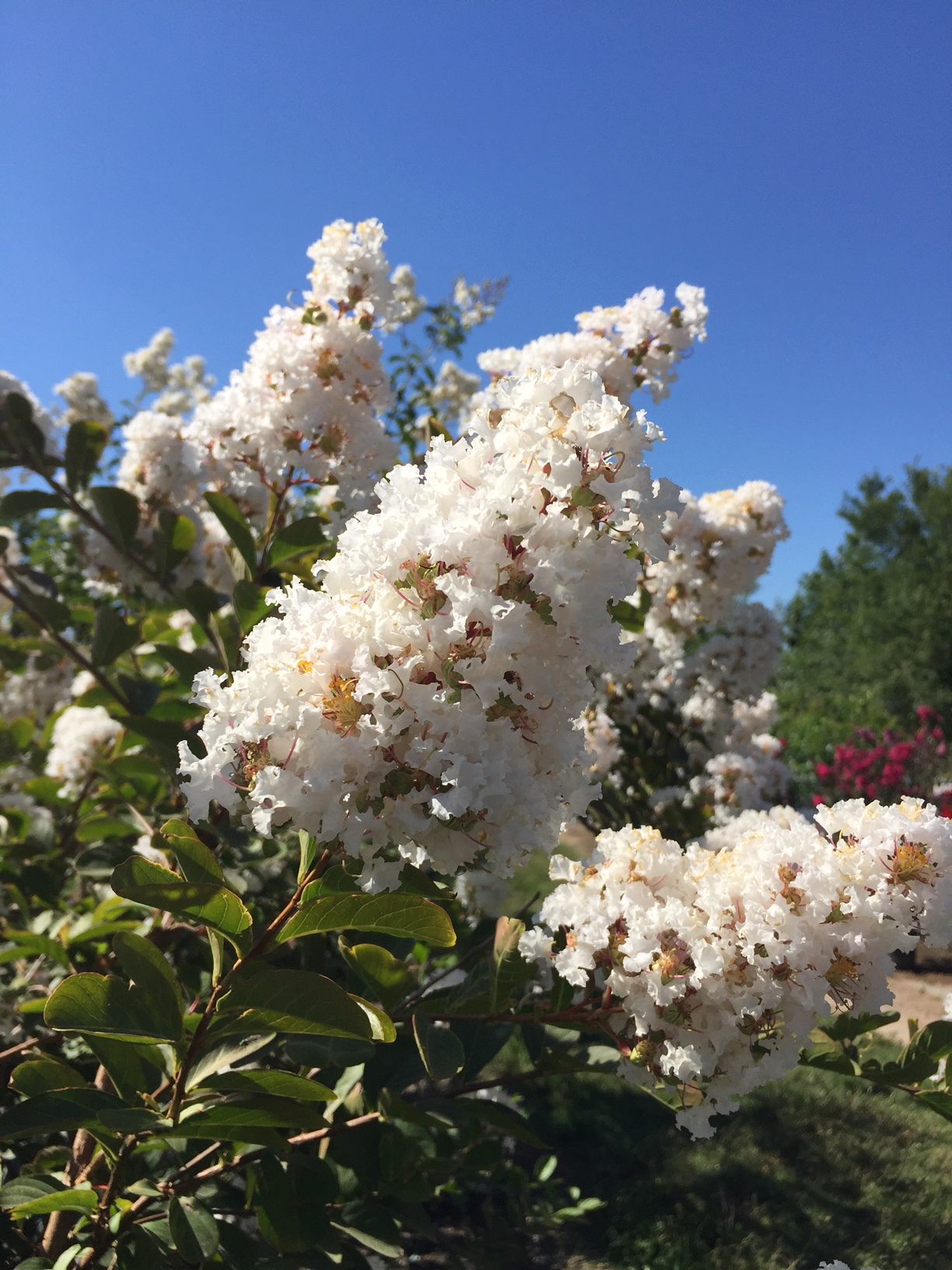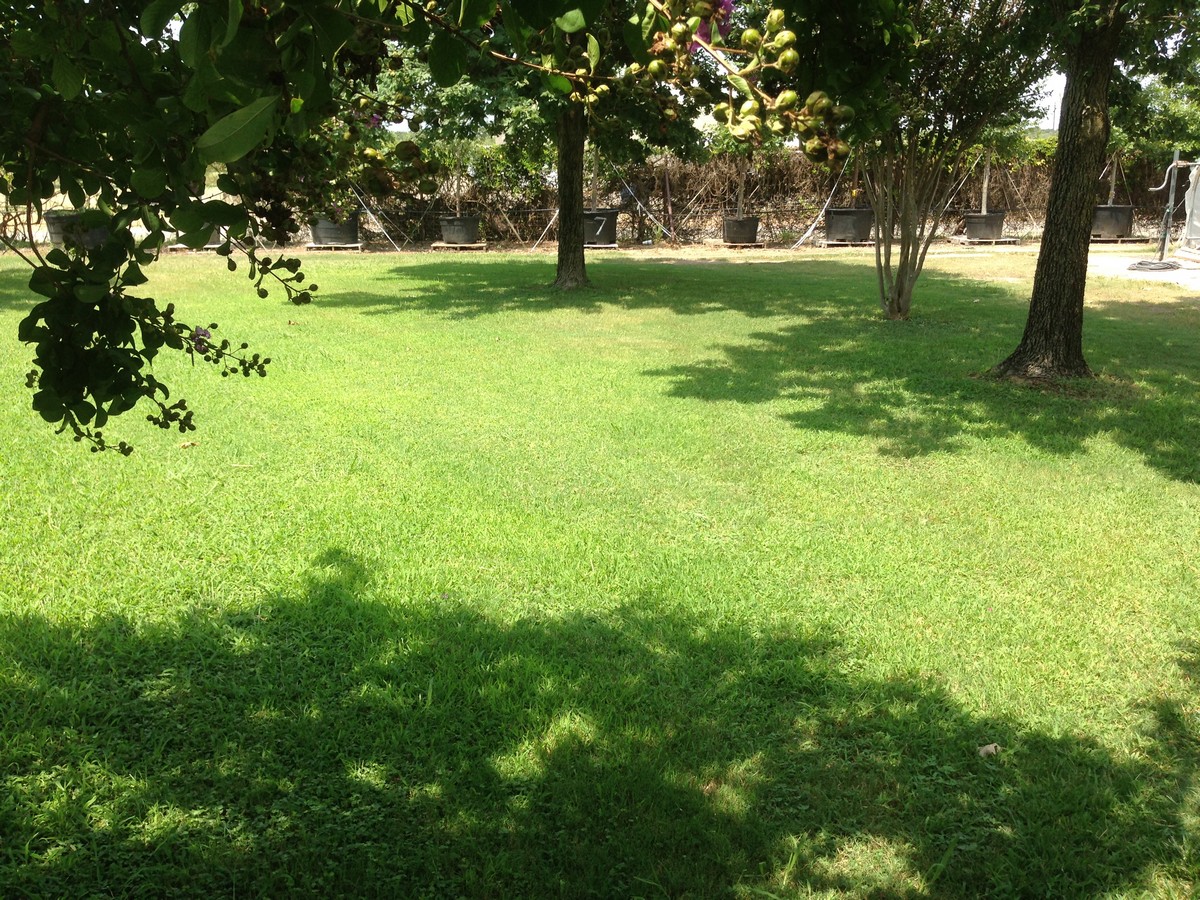
A bed which is at least 10 feet in diameter may be constructed with untreated timbers, rock or cinder blocks. If your soil is thin, rocky or clay you will need to build up at least a foot of well-drained soil for your trees to be able to thrive. Fruit trees require at least one foot of well-drained soil to thrive. Soil is probably the most limiting factor for growing fruit trees in Central Texas.

Do not allow the mulch to touch the trunk of the tree. Mulch will help conserve moisture and a 2”-3” layer of mulch under the canopy will keep weeds at bay as well. Be prepared to water all the way out to the drip-line of the tree, and extend the watering area annually, as the tree grows. Avoid overhead watering or overspray from lawn sprinklers. Once a tree is established, soaker hoses supply water to the tree roots without wetting the foliage, which helps prevent disease. Water is required for fruit trees to thrive and produce fruit. Be sure to locate your trees where they will receive at least 8 hours of direct sun each day. Sun is required for fruit trees to grow and produce fruit.

Such a rewarding experience! There is one caveat, however.įruit trees may be grown in Central Texas as long as their basic conditions are met. As I have said before, the health of the tree, location of the tree, moisture level in the soil and many other factors will determine the ultimate outcome.It’s fruit tree planting time again. Since we have not experienced the -1☏ in some Central Texas locations in our lifetime, this will be a learning experience for us all. I think that we may see the effects of the freeze on these trees for many months. It is impossible to know what is going on inside the tree (the vascular system) and under the ground in the root system. Live Oaks are shedding their leaves, as expected, and will begin leafing out soon. Nature is constantly changing, and we need to be prepared to change with it. I have lost many plants to fungal organisms in the soil, then had to replace them with plants that aren’t susceptible to that fungus. Even Salvia greggii get scraggly after about 5 years if not pruned correctly. Texas Sage and Rosemary usually start to deteriorate after about 15 years. Many of our common landscape plants do have a “lifespan”. This is harder for those of you with new landscapes, but it does give us the chance to realize that plants do not live forever. Landscapes are dynamic, and we need to be prepared for change. Personally, I am taking this opportunity to re-assess the plantings in my yard, and I think it will be a positive experience. This was a significant event for everyone in Agriculture in these states, and it will take time to recover. All nurseries in Texas and Louisiana were heavily impacted by this freeze, and replacement plants of certain species may be limited. I want to remind everyone not to jump to conclusions too early. Some may not show symptoms of stress until late spring or even summer. This is why it is so hard to predict what the future holds for these trees and shrubs. Trees and shrubs that have had loss to the root system or damage to the vascular system will show symptoms at this time. High temperature and wind puts an added stress on the roots and vascular systems to be able to move enough water and nutrients through the plant as moisture is lost from the emerging leaves.


In the coming weeks or even months, as trees and shrubs that still have the ability to put out new growth begin showing some green, we will also be experiencing some higher temperatures. The healthier a plant or tree was going into this freeze, the better the chance of recovery, especially with our native and adaptive species. I think it is important to understand that the plants are still in the process of reacting to this freeze. I have been getting a lot of questions on whether this plant or that plant will be likely to recover.


 0 kommentar(er)
0 kommentar(er)
